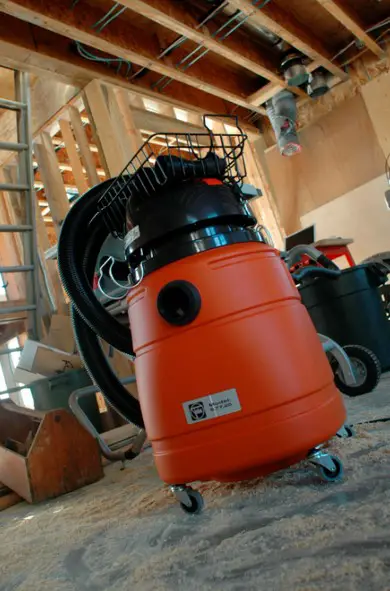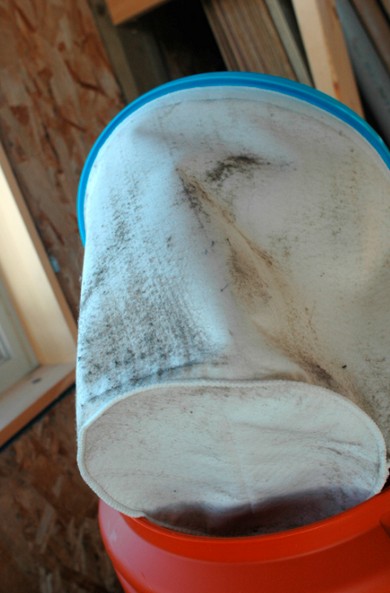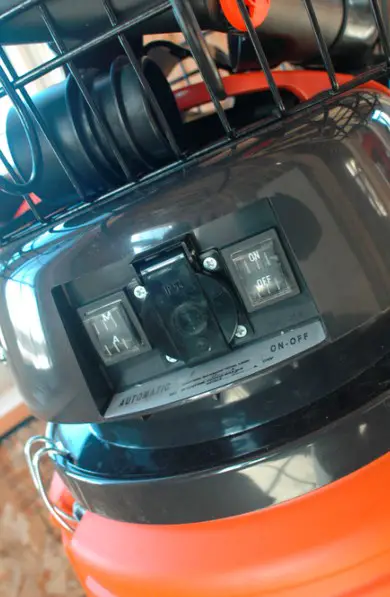
Chances are good that if you’re interested in making your home a better place, a workshop vacuum isn’t on the top of your list of gotta-have tools. It might not even be on the list at all. And if that’s the case, prepare to have your mind changed. Workshop vacs make many DIY and renovations jobs turn out better, cleaner and more successful in ways that aren’t obvious unless you’ve experienced them. Even on days when I don’t spend time in my workshop, our household shop vac gets plenty of use.
The first thing to understand is that wet/dry workshop vacuums are the most economical, long-lasting source of suction power you can buy. They’re called wet/dry because they’re designed to suck up liquids just as easily as dry fluffy stuff. And that’s a great help if you ever have a household flood to deal with. Compare the price, performance and versatility of vacuums made for household use with wet/dry workshop models and you’ll see the difference. You simply get much more machine for your shop vac dollar.
My current vac is put to use regularly in four different places around our house:
- Outdoors for cleaning vehicles and outbuildings.
- Inside the workshop for small-scale sawdust control and pre-finish preparation.
- Part of home improvement clean-ups.
- The source of power for our domestic central vacuum system. This last feature alone is worth the price of the tool.
When buying a workshop vac, you need to look at three things:
- Suction power
- Filter design
- Noise output
Suction Power
Suction power is the most difficult to assess accurately. There’s actually no universally accepted method of measuring the suction power of a vacuum, so different manufacturers adopt different systems to describe the power of their machines.

You’ll find vac power measured in a dizzying assortment of terms. Air flow volume (in cubic feet per minute), static water lift (in inches), air velocity (in both km/h and mph), peak horsepower (hp), peak air watts and motor amperage draw (amps). The good news is that you can ignore most of these numbers and concentrate on just two, looking at perhaps one more number if it’s available. I’ve learned from experience testing many shop vacs for magazine articles that it’s best to start by looking at motor draw in amps. This is a measure of the flow rate of electricity through the vac’s motor and is a pretty good (though not perfect) yardstick of suction power.
Another common and useful measure of vac power is the flow rate of air through the unit, measured in cubic feet per minute (cfm). My favourite measure of all is inches of water lift. Though this isn’t always listed on manufacturer spec sheets, it’s accurate and representative of what a vacuum can do. Too bad it’s not specified more often.
When you finally do make up your mind to buy a shop vac, choose a powerful model. There are many, many models offered, lots of them small. But in my experience anyone who thinks they need a shop vac probably needs one that draws at least 11 amps of electricity pulling at least 160 cfm of air through a 2 1/2-inch outlet hose.
Don’t be fooled by the liquid volume ratings that are universally applied to shop vacs. They only refer to the size of the canister reservoir. Some physically large shop vacs actually have weaker suction power than some smaller-sized models.
Filter Design & Noise Output
Air quality experts have discovered that very tiny airborne wood dust particles are much more hazardous than once thought. Standard filters on almost all shop vacs simply aren’t designed to trap these tiny particles. They actually make things worse by broadcasting the most damaging size of airborne particles. If you’re planning to use your new vac to control wood dust in the workshop, be sure to choose a unit that can be fitted with a high-efficiency accessory filter, often called a HEPA filter. Not all can.  This replaces the conventional filter and traps particles down below 0.5 microns in size. This is the threshold below which particles cease to pose a health hazard. Specialty woodworking outlets all carry upgraded vac filters, so call before you buy.
This replaces the conventional filter and traps particles down below 0.5 microns in size. This is the threshold below which particles cease to pose a health hazard. Specialty woodworking outlets all carry upgraded vac filters, so call before you buy.
Shop vacs are traditionally rather loud machines, but some manufacturers have taken steps to make them more quieter. In all the cases of low-noise machines I’ve tested with a digital sound meter, they really are much more pleasant to be around.